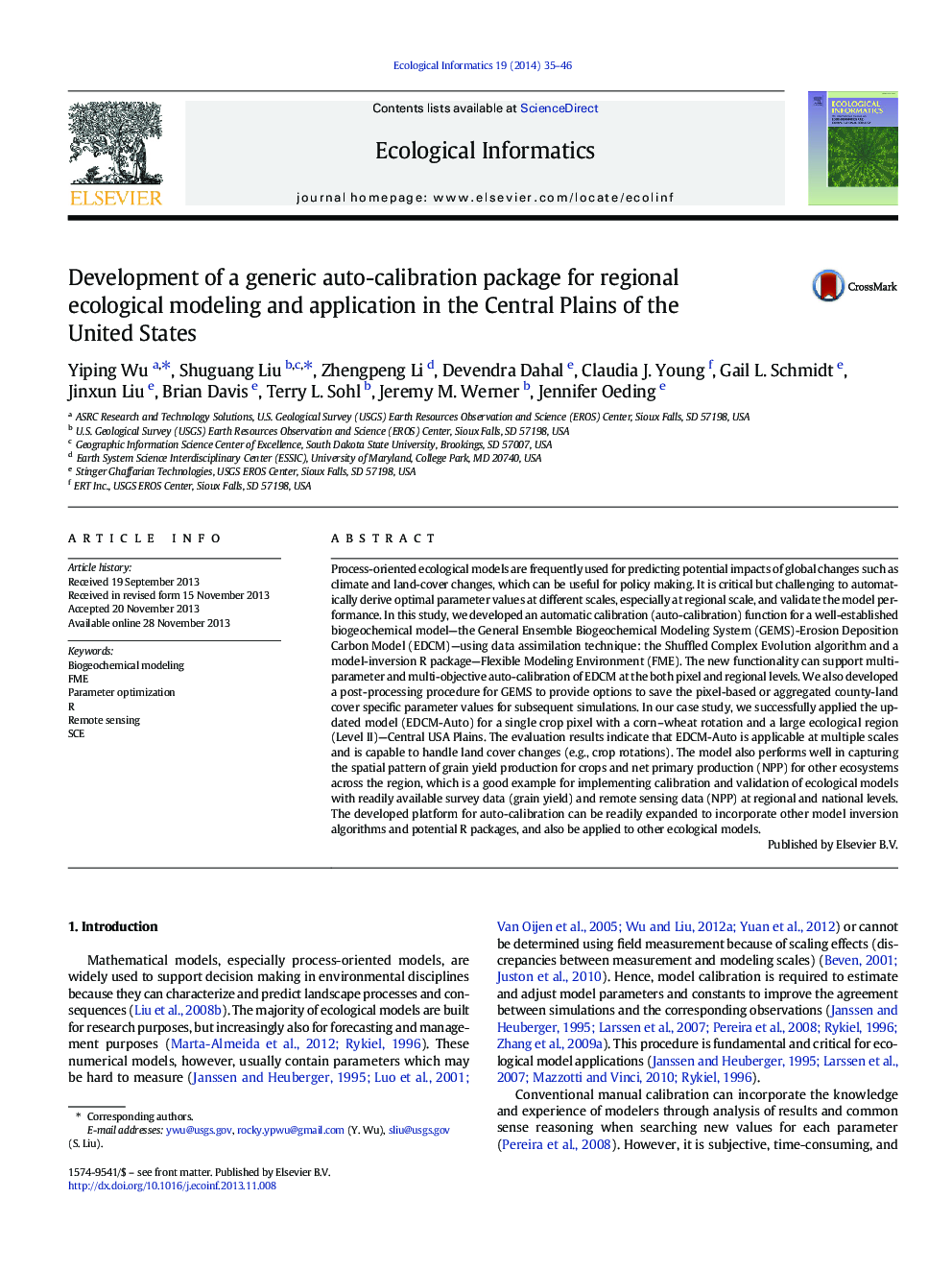| Article ID | Journal | Published Year | Pages | File Type |
|---|---|---|---|---|
| 4374949 | Ecological Informatics | 2014 | 12 Pages |
•A generic calibration package was developed for regional biogeochemical modeling.•Both SCE and R-based FME were incorporated into the auto-calibration package.•Regional calibration was accomplished with readily available observation data.•Auto-calibration performed well in capturing regional grain yield and NPP.•Remote sensing data can be used for regional model calibration and validation.
Process-oriented ecological models are frequently used for predicting potential impacts of global changes such as climate and land-cover changes, which can be useful for policy making. It is critical but challenging to automatically derive optimal parameter values at different scales, especially at regional scale, and validate the model performance. In this study, we developed an automatic calibration (auto-calibration) function for a well-established biogeochemical model—the General Ensemble Biogeochemical Modeling System (GEMS)-Erosion Deposition Carbon Model (EDCM)—using data assimilation technique: the Shuffled Complex Evolution algorithm and a model-inversion R package—Flexible Modeling Environment (FME). The new functionality can support multi-parameter and multi-objective auto-calibration of EDCM at the both pixel and regional levels. We also developed a post-processing procedure for GEMS to provide options to save the pixel-based or aggregated county-land cover specific parameter values for subsequent simulations. In our case study, we successfully applied the updated model (EDCM-Auto) for a single crop pixel with a corn–wheat rotation and a large ecological region (Level II)—Central USA Plains. The evaluation results indicate that EDCM-Auto is applicable at multiple scales and is capable to handle land cover changes (e.g., crop rotations). The model also performs well in capturing the spatial pattern of grain yield production for crops and net primary production (NPP) for other ecosystems across the region, which is a good example for implementing calibration and validation of ecological models with readily available survey data (grain yield) and remote sensing data (NPP) at regional and national levels. The developed platform for auto-calibration can be readily expanded to incorporate other model inversion algorithms and potential R packages, and also be applied to other ecological models.
